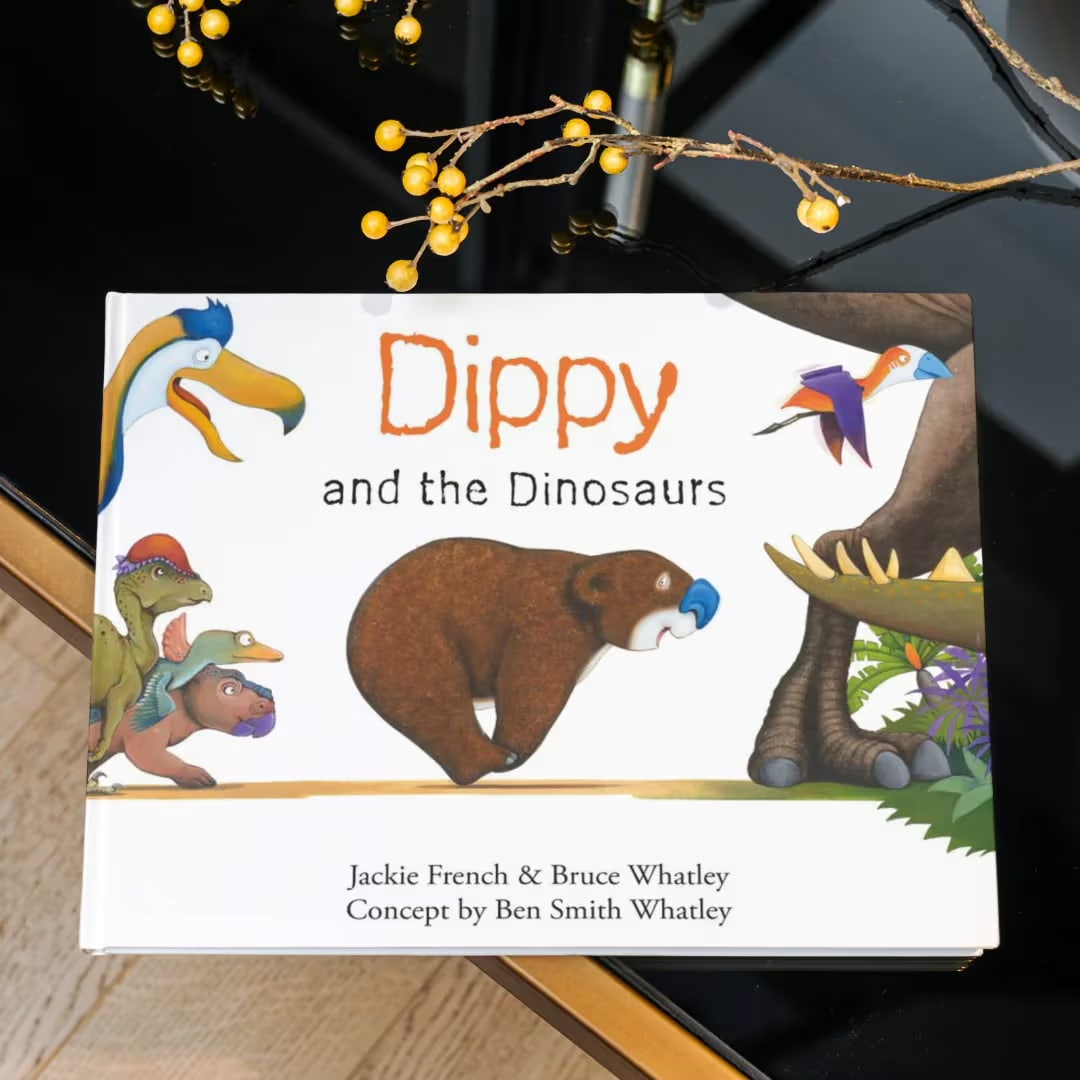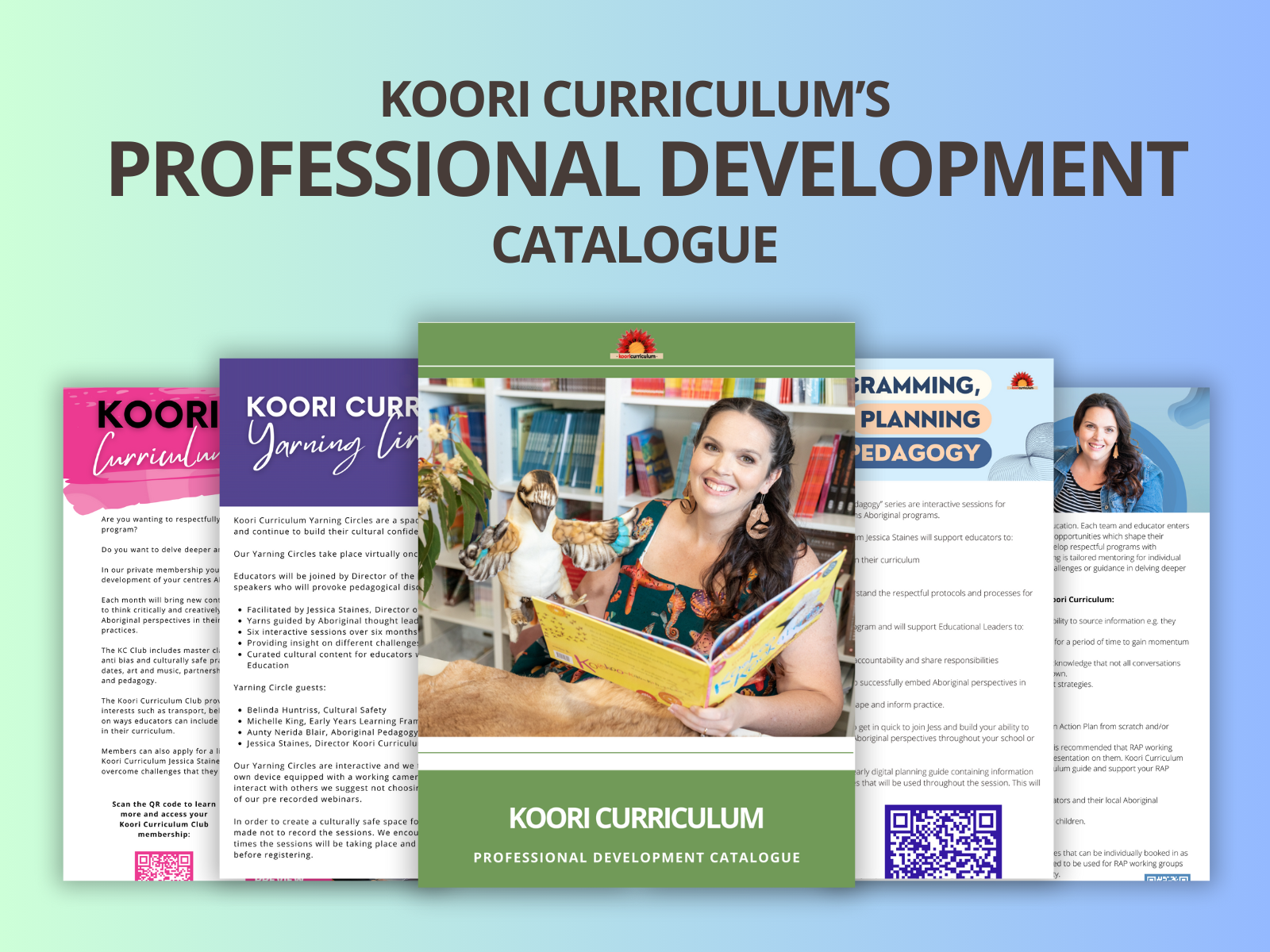
Our Top Books with Puppets
Finger puppets are a great prop to use during story time with young children to make reading fun, engaging and interactive. We have put together a list of our favourite Aboriginal storybooks to read whilst using puppets.

"Who Saw Turtle?" By Ros Moriarty. Illustrated by Balarinji.
A simple story for the very young that tracks the amazing migration of turtles featuring vibrant Indigenous artwork by Balarinji.
Who saw Turtle? Did the whale with the slapping, splashing tail? Or the octopus with the dangly, stretchy tentacles? Maybe the fish with the glittery, shimmering scales?
A glorious exploration of the amazing migration of Turtle as she travels the world and then returns home to lay her eggs, illustrated by Balarinji, Australia's leading Indigenous design studio.
Ros Moriarty, author of the acclaimed memoir Listening to Country, is also the founder of Indi Kindi early literacy education.

Use with Turtle Finger Puppet
Follow Up: Extend on this language experience by singing turtle songs such as “I had a little turtle”.

"The Butterfly Garden" by Michael Torres. Illustrated by Fern Martins.
The Butterfly Gardenis an entertaining introduction to the life cycle of a butterfly - played out by a fat caterpillar, a hungry kookaburra and a supporting cast of beautiful butterflies.
Spare and simple,The Butterfly Gardenalso weaves in the idea of how the kookaburra may have got his laugh. Fern Martins illustrations are a mix of strong colour and transulcent beauty. Her stained-glass interpretations of the cocoon at its various stages show its ephemeral quality in a joyful and fluid way.
This feel-good board book for Early Childhood will bring a smile to all readers.

Best Used with Kookaburra Finger Puppet
Follow Up: Extend on this by singing “Kookaburra sits in the old gumtree” and “Fuzzy Wuzzy Caterpillar”.

“Where is Galah” by Sally Morgan.
Dingo is on the prowl.He can see Emu, Swan and Turtle.He can hear Crocodile, Frog and Kookaburra. But where is Galah?
Tip: There are many Australian animals and birds in this story and we advise using the following finger puppets; Emu, Kookaburra, Crocodile, Frog,Turtle, Koala,Platypus, Wombat and of course Galah. The Dingo alongside the Galah are two of the main characters in this book. We have a plush Dingo available in our shop here.

"Joey Counts to Ten" by Sally Morgan & Ambelin Kwaymullina.
In lyrical, rhythmic prose, a young joey learns how to count to ten by noticing the wonderful wildlife surrounding him in the Australian bush. The bright, colourful illustrations on each page were created by Aboriginal artist Ambelin Kwaymullina and will mesmerise children.
Beyond numbers, young readers will be introduced to iconic Australian animals, the phases of the day, changing weather and various outback sounds. The natural beauty of a day shines through the sparse text on each page.
In addition, we are subtly reminded of the comforting love of a mother kangaroo as she follows her child throughout the outback all day long asking “Little Joey, what can you see?” guiding him to learn about his world.
Best suited for very young children aged 1 – 3.

Best Used with plush Australian kangaroo “Tess”

"Loongie the Greedy Crocodile" by Lucy and Kiefer Dann. Illustrated by Bronwyn Houston.
Loongie is a greedy saltwater crocodile who lives among the mangroves at Walaman Creek in the remote Kimberley region of Western Australia. He has no friends and no-one will come near the creek while he’s around. Loongie soon learns why being greedy has its consequences.

Best Used with Crocodile Finger Puppet
Tell this fun story with out fun crocodile finger puppet.

"Old Nana Quokka" by Rhonda Collard-Spratt and Jacki Ferro.
On the spiritual place of Wadjemup, Rottnest Island, tourists are injuring the animals and making them sick. It's time to make a stand. In this Aboriginal Dreaming story, farting quokkas, dive-bombing seabirds and protesting snakes teach us how to look after our sacred land and its animals. Through Old Nana Quokka, Book 3 in the Spirit of the Dreaming series, Yamatji-Noongar Elder Aunty Rhonda Collard-Spratt shares the healing wisdom of her ancestors, and the importance of caring for Country.

Best Used with Quokka Puppet

"Dippy and the Dinosaurs" by Jackie French & Bruce Whatley. Concept by Ben Smith Whatley.
An 'Ice Age' meets Diary of a Wombatstory.
Dippy the diprotodon is the BIGGEST and friendliest wombat who lived 100,000 years ago.
Dippy has dug a new hole. A BIG hole, which leads him to a strange new world - and even stranger new friends. But do these giant creatures really just want to play?
Based on a concept by Ben Smith Whatley and brought to life by the creators of the internationally bestselling
Diary of a Wombat, this is an hilarious story of prehistoric daring and chaos set in the fascinating world of ancient Australian megafauna.

Best Used with Wombat Puppet

"The Emu Who Ran Through the Sky" by Helen Milroy.
The emus couldn't fly, but did they sit around looking sad? No! They made sure everyone knew just how fast they could run. Except for poor Lofty...
Lofty, a young emu desperately wants to win a big emu race, but he is slow and clumsy - and his first race ends in disaster! But, Lofty realises there is another way to win the race.
He enlists the help of his Bush Mob friends Eagle, Sugar Glider and Bat - who are all excellent fliers - to teach him to fly. But it is Bush Mob's inventor, Platypus, who designs the Feathery Paraglider that allows Lofty to win the day!
Tales from the Bush Mobis a series of books about the Bush Mob, a group of animals who work together to solve problems. The first in the series Willy-willy Wagtail, introduced Willy Wagtail and Gusto the Wind, who save the animals from a bushfire.
Each book shares a rich landscape of characters and places, including Lofty the emu, Eagle, Sugar Glider, Bat, Platypus, Koala, Wombat, Kookaburra, Echidna, Kangaroo. These stories emphasise the value of respect for First Nations culture and country, as well as the importance of courage, perseverance and wisdom to bind communities together. The Emu Who Ran Through the Sky is the second book in the series.

Best Used with Emu Puppet

"Mad Magpie" by Gregg Dreise.
The Cheeky butcher birds always tease Guluu and he is becoming a very mad magpie.
When Guluu herds the advice of his elders and ignores the birds, they just laugh at him.
but Guluu tries again... and this time he stands proudly at the riverbank and remembers how to used to sing when he was having a bad day.
Stay calm like the surface of the water, yet strong like it’s current. Sing! Dance! Laugh!




